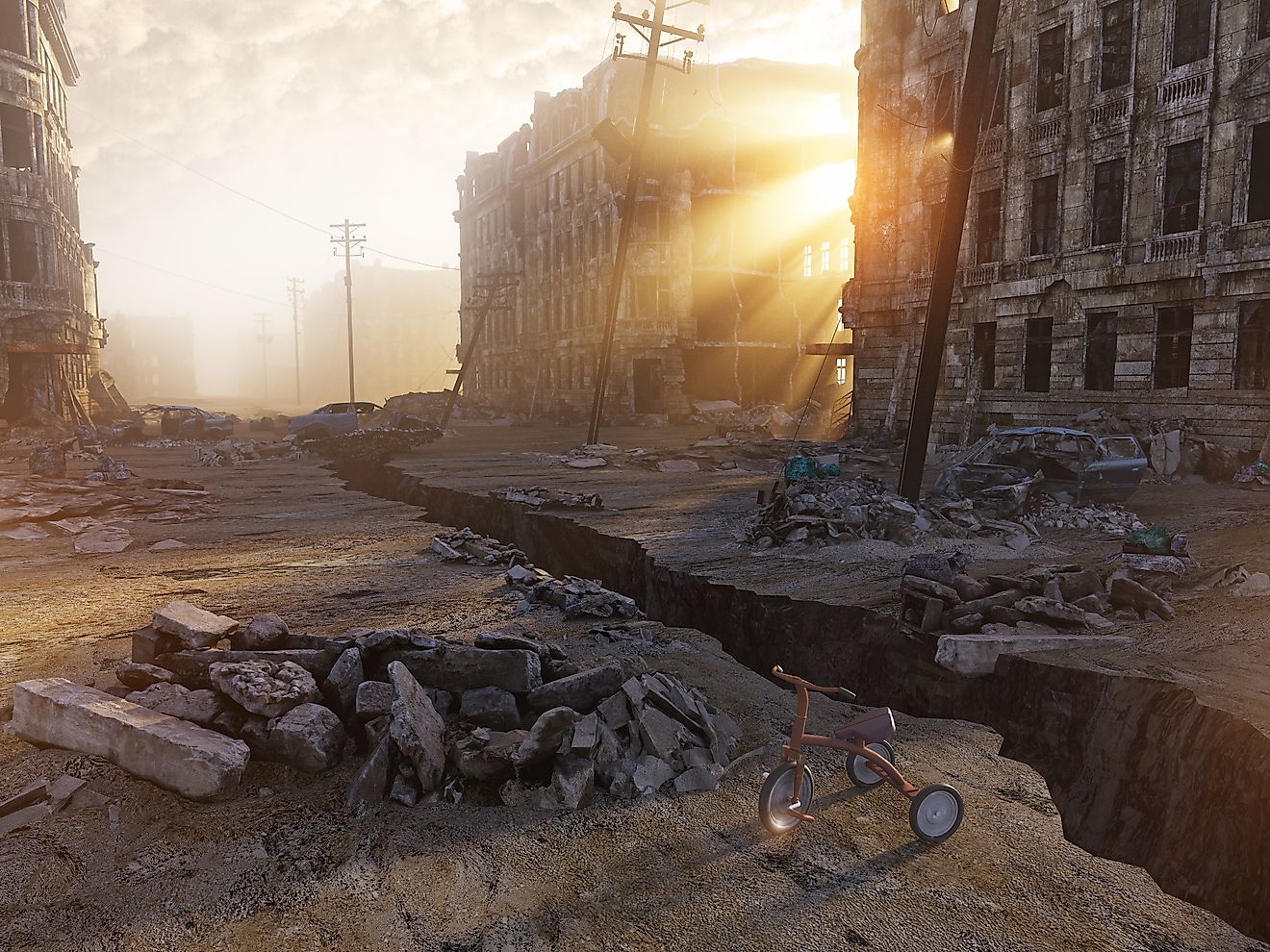
The Most Beautiful Lighthouses in the US
Whether you’re attracted to the structural beauty or the rich history behind these important buildings, there’s something undeniably enchanting about visiting an old lighthouse. The first lighthouse in the US was built in 1716 in the Boston Harbor. Although it’s been rebuilt since then, the Boston Lighthouse is the oldest continually used and last staffed lighthouse in the country.
Today, lighthouses are a major draw for tourists and many are situated amidst exceptionally breathtaking landscapes. Those interested in seeing the most beautiful lighthouses in the US will be spoiled for choice. From Maine to California, these lighthouses will surely be a bright spot during all of your US summer travel adventures.
Portland Head Light, Maine
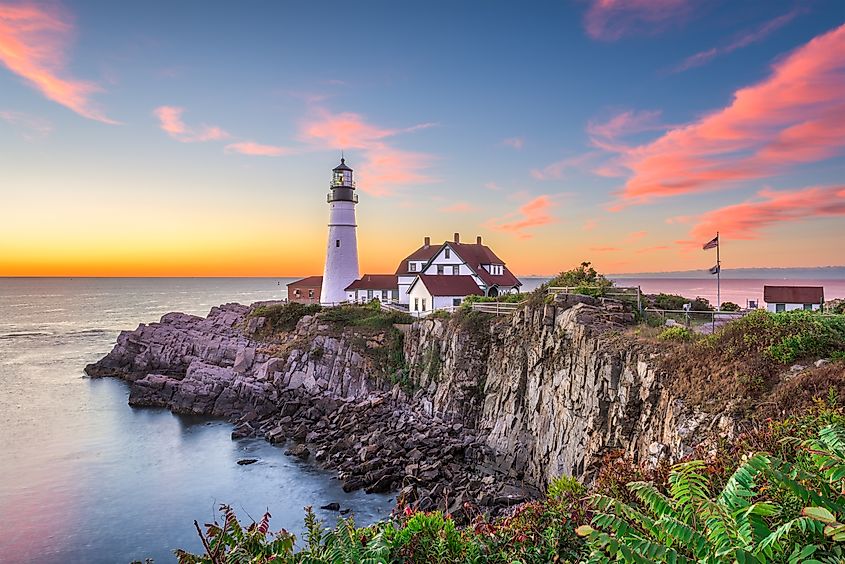
Portland, Maine, USA at Portland Head Light.
It’s no surprise that the picturesque coastal state of Maine is home to one of the best lighthouses in the country. Portland Head Light is located within Fort Williams Park in Cape Elizabeth. While visitors can frequent the “award-winning” museum at the base of the lighthouse, the tower itself is only accessible once a year during Maine Open Lighthouse Day.
When first built, the lighthouse tower stood 72 feet tall and shone brightly with the power of 16 whale oil lamps. Construction of the lighthouse wrapped in 1791, making Portland Head Light the oldest lighthouse in the state. Those hoping to catch a glimpse of the historic structure will find plenty of nearby things to see and do during their visit.
Start by exploring the rest of Fort Williams Park where you will find walking paths, gardens, rocky beaches, an arboretum, and places to fly kites. Next, take a short 4.6-mile drive to the Portland Museum of Art to enjoy the various exhibits. In the warmer months, visitors can also enjoy pick-your-own strawberries at Maxwell’s Farm.
Big Sable Point Lighthouse, Michigan
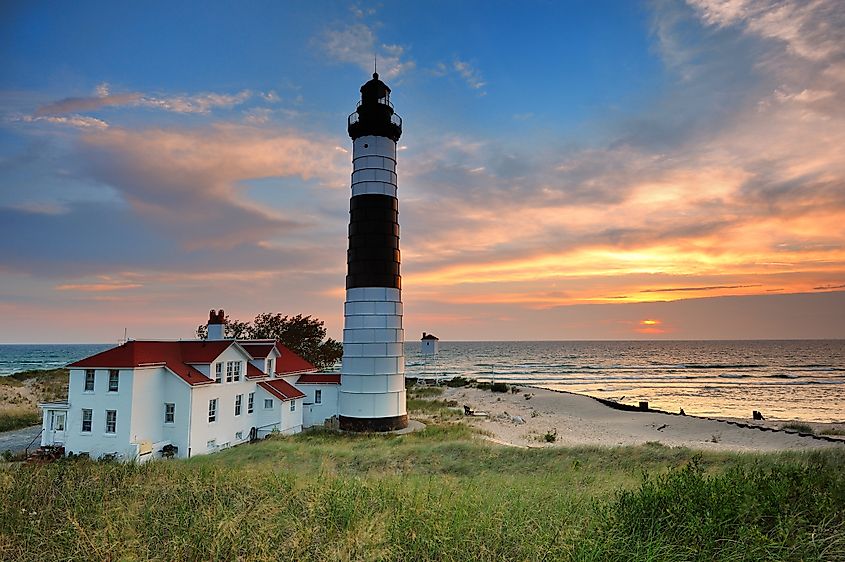
Big Sable Point Lighthouse sunset - Ludington , Michigan.
Situated on the sandy shores of Lake Michigan in Ludington State Park, Big Sable Point Lighthouse is quite the sight. The 112-foot black and white tower is easy to spot and contrasts beautifully against the blue lake and the surrounding green jackpines. Originally built in 1867, the lighthouse has taken some damage throughout the years. Between climate-related deterioration in 1900 and ongoing erosion issues, the lighthouse had to be reinforced with cement. Later, in 1943, a seawall was built to help with erosion. However, the strongest efforts to maintain this now historically registered building didn’t come about until 1987 when the Sable Points Lighthouse Keepers Association was formed. That association is still committed to restoring and preserving the lighthouse so it can be enjoyed for many years to come.
Visitors hoping to tour the tower can do so daily between May and October between the hours of 10 a.m. and 5 p.m. After a tour, visitors can explore the remainder of Ludington State Park where they will find hiking trails, sand dunes, and campsites. For even more outdoor adventure, take the 25-mile drive to Nordhouse Dunes Wilderness Area. Here, visitors will have access to beaches, campsites, picnic areas, learning programs, hiking trails, and wildlife viewing.
Split Rock Lighthouse, Minnesota

Split Rock Lighthouse sits high above the shores of Lake Superior on a rocky edge in Split Rock Lighthouse State Park. Plans for constructing the lighthouse started immediately following an accident in November 1905 when gale-force winds destroyed 30 ships. Five years later construction was completed and the lighthouse has been considered a highlight of Minnesota ever since. This lighthouse is also among the most photographed spots in the entire state.
Between the lighthouse and the visitor's center, travelers can always find a tour or event to enjoy. Both the “Keepers Tour” and the “Conquering the Cliff Tour” are offered regularly between the months of April and October. Although the tours are equal parts fun and educational, many believe the best view of Split Rock Lighthouse comes from the trailhead/camping area in Split Rock State Park. Visitors looking for things to do nearby can also explore Gooseberry Falls State Park where rushing waterfalls, hiking trails, and Historic log and stone structures await. History buffs may also want to check out The Duluth and Iron Range Railroad Depot Museum.
Point Reyes Lighthouse, California
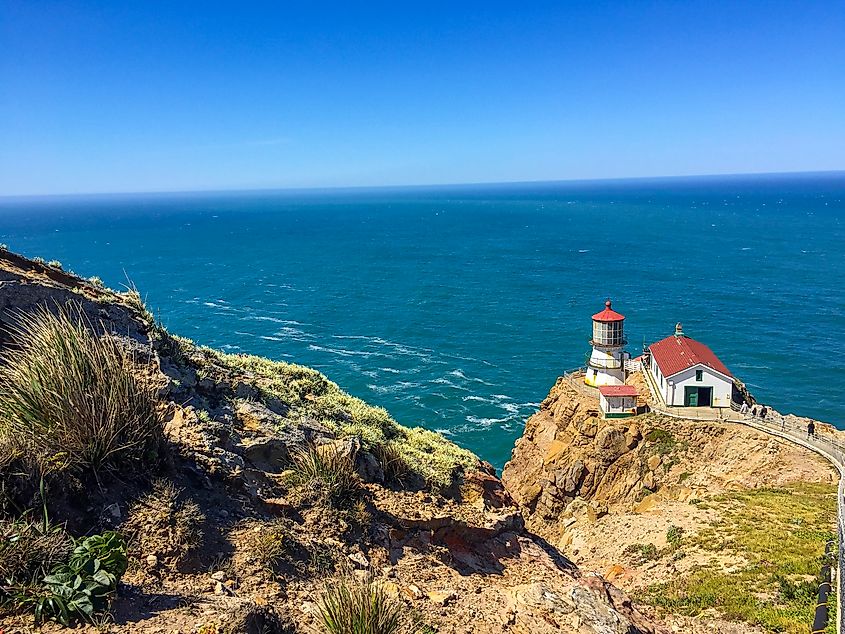
Point Reyes Lighthouse was once featured in the classic horror film, The Fog. This makes sense since Point Reyes is considered the second foggiest place in all of North America. Despite those fun facts, there’s nothing scary about this beautiful and historic structure. Although the lighthouse now sits on the Gulf of the Farallones in Point Reyes National Seashore, the Lighthouse lens and mechanism were constructed in France and sent here by ship. Other parts of the lighthouse came over on a ship from South America. Eventually, the parts were carried on ox-drawn carts to the tip of Point Reyes. Eventually, dynamite was used to create a level spot where the lighthouse could sit without being blocked by high fog.
Today visitors can admire the lighthouse in the summer during select days and hours. While there, don’t forget to check out the Leaning Tree by the Lighthouse Visitors Center as well. Animal lovers will also want to explore the nearby Sea Lion Overlook where sea lions are frequently seen basking in the sun on the rocks below.
Big Bay Point Lighthouse, Michigan
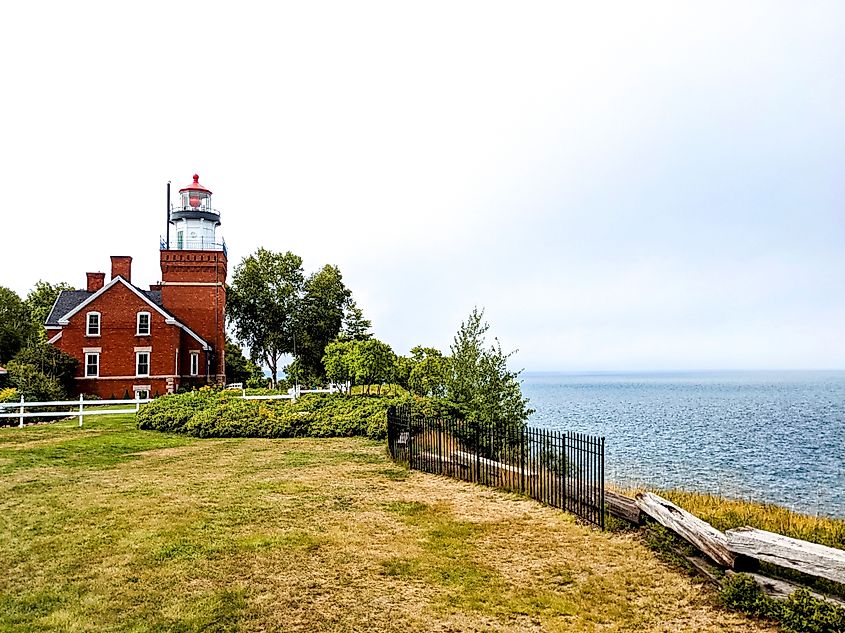
Big Bay Point Lighthouse Lake Superior Michigan.
Standing tall on a bluff overlooking Big Bay, Michigan, the Big Bay Point Lighthouse is a red-bricked beauty. In addition to the lighthouse, a charming bed and breakfast is also located here, making it a great destination for tourists. After settling in, visitors will find a wide range of things to see and do in the surrounding area. According to the B&B’s website, activities including dog sledding at Snowy Plains Dog Sleds and Pictured Rocks boat cruises are all on offer. Presque Isle Park and Van Riper State Park are also nearby and perfect for a day of outdoor exploration.
Heceta Head Lighthouse, Oregon

If the bed and breakfast aspect of the last lighthouse caught your attention, then you will also love Heceta Head Lighthouse in Oregon. Located in Heceta Head Lighthouse State Scenic Viewpoint, visitors have the option to spend the night in an authentic lightkeeper’s cottage. While here, guests can admire the lighthouse and look up at the stars using the First Order Fresnel lens. And when morning rolls around, guests can indulge in a 7-course breakfast.
The lighthouse itself was first illuminated in 1894 and is known as “the strongest light on the Oregon coast.” After enjoying a full breakfast and admiring the lighthouse, visitors can begin to enjoy the rest of the State Scenic Viewpoint. Here, amenities including hiking, whale watching, picnicking, fishing, and swimming at the beach are all available.
Diamond Head Lighthouse, Hawaii
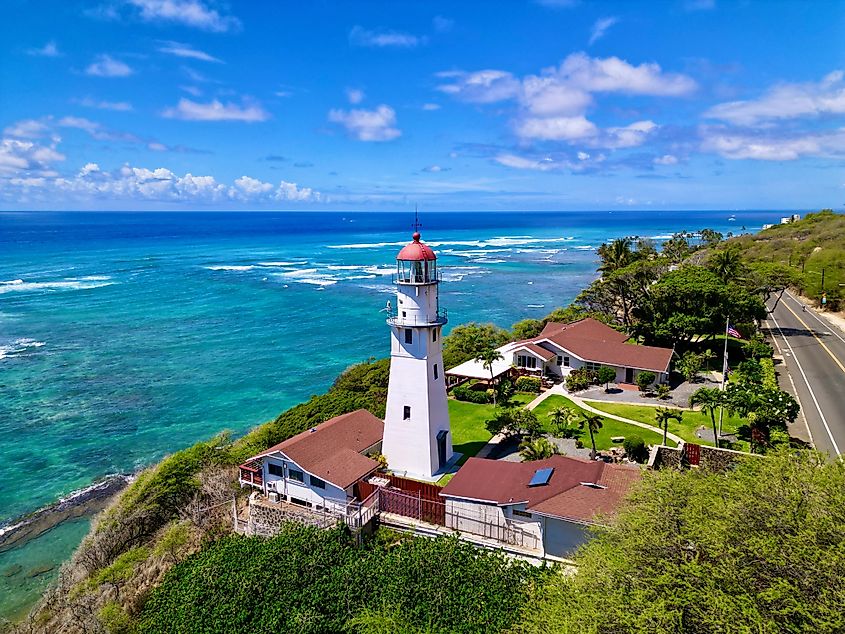
Lighthouse at the base of Diamond Head crater, Honolulu Hawai'i.
Diamond Head Lighthouse sits on Diamond Head (or Lēʻahi, as the locals call it) in Honolulu, Hawaii, and has been part of the National Register of Historic Places since 1980. According to the US Coast Guard, prior to any lighthouses being built, Hawaii used to use large bonfires to help ocean travelers navigate their way to shore. However, after two major ship accidents in 1893 and 1897, plans for constructing lighthouses in Hawaii were put into play.
In 1899, Diamond Head Lighthouse was constructed and has remained a picturesque site ever since. Those hoping to see the historic lighthouse can do so with a visit to Diamond Head State Monument. While here, don’t forget to enjoy the famous hiking trails, coastal views, and park gift shop.
Thomas Point Shoal Lighthouse, Maryland
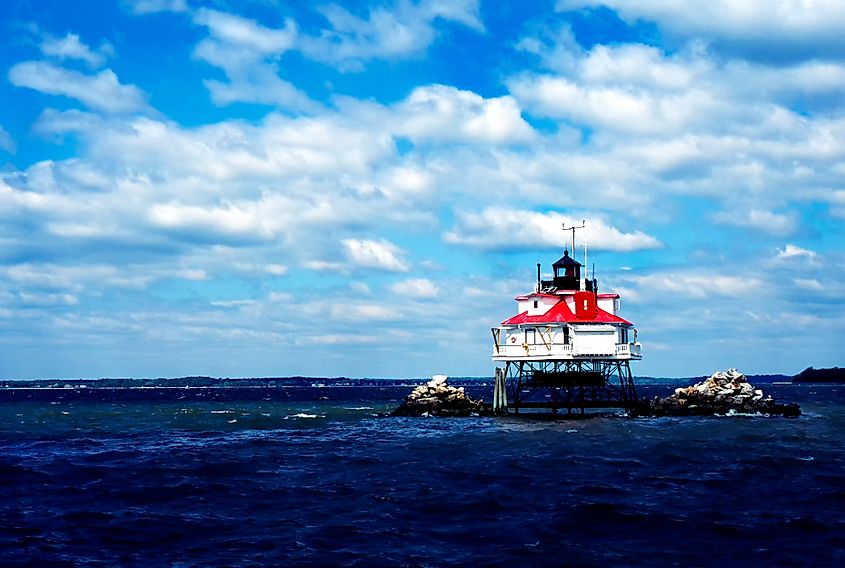
Thomas Point Shoal Lighthouse, Chesapeake Bay, Maryland.
Last but certainly not least, Thomas Point Shoal Lighthouse in the Chesapeake Bay is “the most recognized lighthouse in Maryland.” It is also notably the last screw pile lighthouse still standing on its original foundation. Because it is a screw pile-style lighthouse, visitors can only access the building by boat. Luckily, tours are available to book through the United States Lighthouse Society.
While in the area, travelers can also explore places such as Thomas Point Park and the beautiful town of Highland Beach where outdoor adventure waits around every corner.
Wrapping Up
In addition to being important navigational tools and beautiful historic sites, lighthouses also have metaphorical significance. For example, many believe that lighthouses symbolize the human desire to stay on the right path. Others see them as a beacon of light when life gets dark. Either way, there’s nothing like a lighthouse to make your travels a little more interesting.

